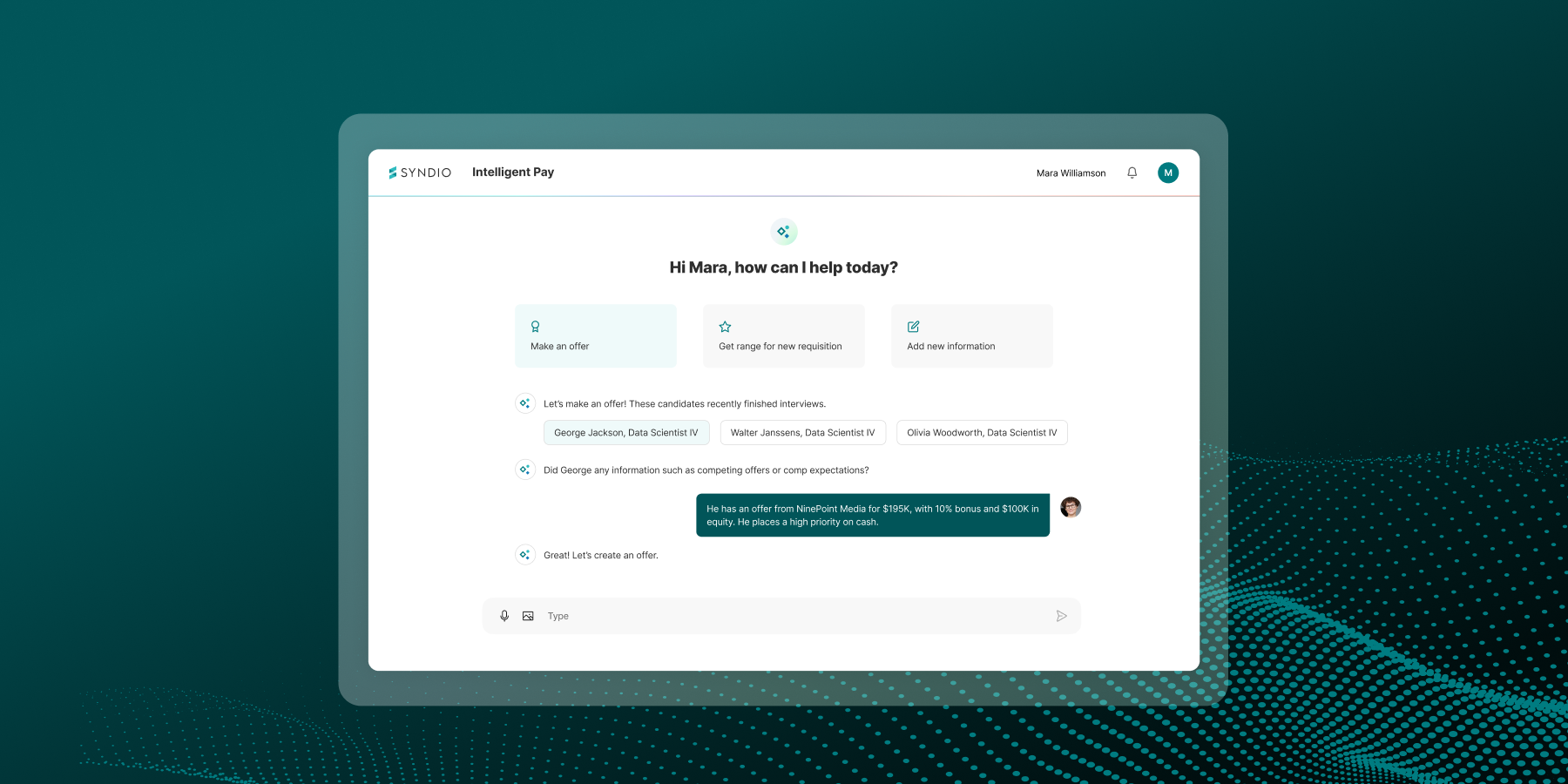In today’s tight labor market and volatile economy, the ability to attract and retain top talent is a competitive advantage and critical to long-term success.
American businesses are facing unprecedented labor market competition. The unemployment rate is at its lowest level since May 1969 and it is becoming increasingly difficult for companies to fill their vacancies. It now takes eleven weeks, on average, to fill a vacant role, nearly double the time it took in 2021. And employees are quitting at high rates and seeking jobs that pay equitably, align with their values, and fit their lifestyle.
Recent research indicates that hiring and retention are still top priorities for a large number of organizations. That means employers will have stiff competition for top talent in spite of current layoffs and economic fears, so it’s vital for companies to retain their best employees. Losing employees in this economy can be quite costly. Research by SHRM suggests that every time a business replaces a salaried employee, it can cost up to 200% of the employee’s salary.
In our latest webinar, Syndio CEO Maria Colacurcio and Julia Pollak, Chief Economist for ZipRecruiter, sat down for a one-on-one conversation to discuss how to optimize your pay policies to improve retention, use pay equity communications to keep your employees engaged, and build equity into your people processes.
Increasing retention strengthens company culture, productivity, and engagement, and lowers overhead costs. Below we highlight some of Julia’s advice for creative ways to retain employees in the current volatile economy.
1. Invest in employee sentiment!
Improving employee sentiment is critical to retention. While labor competition is high for employers, high quit rates show that job seekers are quitting and finding arrangements that better suit them in this tight labor market where they have alternatives.
1 in 4 new hires say that their previous employer asked them to stay and countered their outside offer.
The modern economy has upended the relationship between employers and employees. The recent waves of layoffs have made workers lose trust in the stability and security of full-time employment.
Typically, about 1.4 million Americans are laid off or fired every month; however, during the pandemic, more than 20 million Americans were laid off in just a matter of weeks. That mass layoff experience has had a lasting emotional and psychological impact on people and changed the way they view and trust employers.
Most of those layoffs were widespread and swift, and many of those cuts happened across functions. They were driven by economic reasons rather than performance, so top performers were often just as likely to be cut as low performers. This created what Julia describes as a “confidence crisis” among many workers.
“It created the feeling that even if I work all night, even if I do my very best, it may not be a guarantee of anything. I think it’ll take time for that experience to be sort of in the rear view mirror and for people to feel a greater attachment to their work again.”
– Julia Pollak
So how can employers facilitate greater trust and attachment to their jobs by their employees?
Studies show that showing appreciation and providing recognition go a very long way. Humans crave recognition and appreciation, they want to feel like they are a part of something bigger than themselves, and they want to feel needed.
Find creative ways to not just tell your employees they’re your most valuable asset, but prove it!
2. Train your management
Often, the presumption is that pay has the largest statistical impact on attrition. However, Julia explains that is not always true. While pay is an important factor that influences retention, the main reason people give for quitting a job is typically bad management. Management practices are critical for productivity, morale, and for companies’ longevity.
Employee sentiment and management go hand-in-hand. While there are high rates of fear and uncertainty among employees right now, Julia explains that following these management practices lead to greater confidence amongst workers and a greater perception of fairness:
- Train management: In this era of pay transparency, we see that once employers post pay ranges, questions immediately come up from employees. That is where pay explainability comes in. Managers need to be prepared to skillfully answer questions that arise and explain exactly how pay is determined.
“You need to train managers to have salary conversations, and you need to train hiring managers and your HR teams to understand the motivations for pay… and develop really careful internal communications to ensure that everyone understands the new pay policies.”
– Julia Pollak
- Clearly define standards and pay policies: Objective, measurable standards are valuable when done correctly. People are led to take desired behaviors when they know exactly what they are aiming for.
- Create standardized and consistent feedback loops: Provide opportunities to hear directly from employees about their managers, through 360 reviews, surveys, or pulse checks. But don’t just collect feedback. To build trust, you must respond and act on that feedback.
“In some places, the major sticking point is that there’s no break room, that there’s no water fountain, that there’s no coffee machine, that the bathrooms are all disgusting and dehumanizing and undignified. Often making people feel happier at work can involve very small changes. But you need to listen to what people are experiencing on the job to find out what those are.”
– Julia Pollak
3. Standardize feedback loops
There is a strong connection between feedback and retention. There isn’t a one-size-fits-all solution to how to develop feedback loops at your company, but we do know that the most effective kinds of feedback for employees are direct, immediate, and continuous.
- Know your employees’ values: Job seekers are looking for jobs that align with their personal values so it’s important to use surveys to better understand what is important to them.
“What we’ve found is that when you survey different groups of workers in different industries, different companies, there are different problems everywhere.”
– Julia Pollak
- Keep a pulse on your employees: Post pandemic, there is no standardized business model. Many employers are experimenting with hybrid, in person, or remote models and with different ways of doing things. It is important to keep a pulse on how these changes are affecting your employees and what works best for them.
4. Be transparent about pay
We are living in an era of transparency. Companies that want to have a competitive advantage and stay in compliance must develop a communications strategy around compensation and workplace equity. One way to improve trust is through posting pay ranges in job descriptions. There are a number benefits to this:
- Build trust: We found that transparency builds trust — and not only with existing employees, but also with prospective hires.
- Increase recruitment: “If you look at comparable roles, job posts with pay ranges get 50% more applications and are twice as likely to get quality candidates. There’s a huge recruiting benefit to posting information about pay.”
- Attract value-driven applicants: “Value-driven young job seekers who care much more about diversity and inclusion, about ESG issues, social governance, the environment, etc, also care about transparency because it’s a signal of all those other things.”
- Reduce the “ask gap”: Studies show that without prior knowledge about compensation, women typically ask for lower salaries than comparable men. This is a main driver of inequality. Posting ranges however eliminates the ask gap and improves equity.
Julia also shared the following tips for posting ranges:
- Consider the whole compensation package: “If you are a company that has relatively low base pay ranges but a very generous total compensation package, include that in the beginning of the job description so that it will show in the first two lines of the job posting. Put it right there in the top line that will show up on a job card and a job snippet in an online job board before they even get to the full job description.”
- Create and publish narrower ranges: Studies show that when viewing a job description, the first two places that applicants’ eyes go are the job title and the top of the range. Having a realistic and reasonable range will allow employees to manage their expectations and ensure that applicants’ are a good fit for the budgeted salary.
5. Reassess compensation
Pay your employees equitably! We can’t stress this enough. Luckily, software like Syndio’s Workplace Equity Analytics Platform can help you eliminate pay gaps and increase diversity at all levels of your organization
However, think beyond pay! Pay is just one portion of compensation. And, pay is not always the most important aspect of compensation for employees. There are benefits like loan forgiveness, fertility benefits, or tuition reimbursement that are more important than pay for some employees and can make them very loyal.
Retaining employees is critical in this economy
Employees are every business’s most valuable asset. In this labor market and economy, retaining top talent is more vital than ever. Julia Pollak has shared evidence-based best practices and creative ways to retain employees. Employers that want to make this the year of their greatest retention should invest in employee sentiment, train management, standardize feedback loops, increase transparency, and reassess competition.
These were only a few highlights from the full conversation with Maria and Julia. Watch the on-demand webinar recording at the link below and take a look at our Workplace Equity Communications Playbook for more advice on how to retain employees in a challenging economy. You can also find additional resources at the links below.



